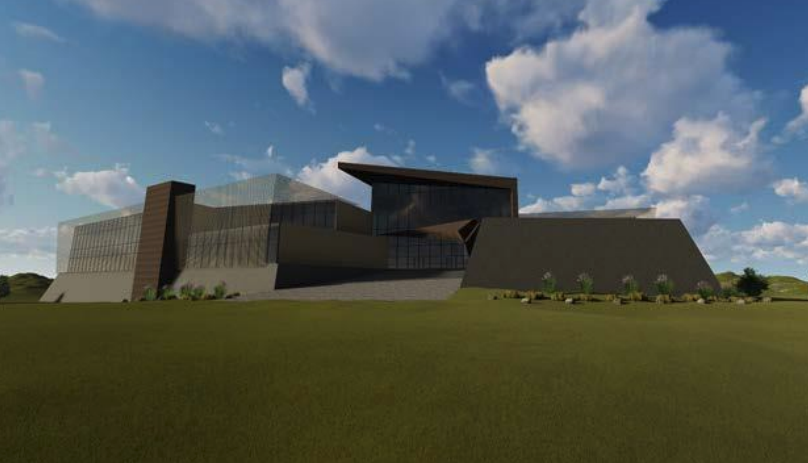An environmental assessment by the Department of the Air Force found that adverse effects of building the headquarters of U.S. Space Command at Redstone Arsenal, Ala., would be “short-term and not significant.”
A favorable environmental assessment should have been all Redstone Arsenal needed to lock in the selection, but after investigations by the Defense Department’s Office of Inspector General and the Government Accountability Office, the DAF must also revisit aspects of the selection itself.
The DAF selected the Army post in 2021 as its “preferred alternative” to house the newly reconstituted unified combatant command. Then-Defense Secretary Mark T. Esper had scrapped the original search before it concluded and directed the DAF to start over with a process borrowed from Army Futures Command that let local communities self-nominate.
However, government officials from Colorado—where the command has its temporary home at Peterson Space Force Base in Colorado Springs—have objected to Alabama’s selection, arguing that former President Donald Trump picked the site as a political favor and that the DAF failed to consider some important factors.
Already, one member of the delegation has raised objections to the draft environmental assessment, saying it contains a factual error and only considers new construction.
As it prepares the final environmental assessment, the DAF will also take into account “concerns regarding full operational capability” along with housing affordability and the availability of child care and support for members of the military and veterans, it said in a statement accompanying the release of the draft assessment.
The draft environmental assessment posted online July 13 for a 30-day public comment period includes reviews of six sites: Redstone Arsenal; Kirtland Air Force Base, N.M.; Offutt Air Force Base, Neb.; Peterson; the Port San Antonio technology and innovation campus in Texas; and Florida’s Space Coast Spaceport.
The command’s proposed 464,000-square-foot office building and additional 402,000 square feet of parking will accommodate 1,450 to 1,800 personnel. The building is envisioned as having a “dignified architectural character without excessive ornamentation” to “convey the importance” of the command’s mission, according to the DAF’s environmental assessment.
The assessment accounts for the “impact of 1,800” personnel on land use, resources, transportation, and other factors. It found that the proposal would have “no significant impacts on the human or natural environment,” according to the report’s abstract. The figure of 1,800 accounts for “a potential but not yet approved number of National Agency Representatives and contractor personnel supporting USSPACECOM missions who might be co-located with the permanent HQ.”
The assessment found that the cumulative effects of the work on soil erosion, water runoff, hazardous waste, and noise at Redstone Arsenal “would be minimal since the projects are generally dispersed over a wide area. It should be noted that the expected impact to air quality, which has a broader [region of influence], would be minimal even with the increase in construction activities and use of combustion engine equipment.”
Members of Colorado’s congressional delegation have sent letters to the DAF raising objections to Alabama’s selection. They’ve cited suspected unfairness, and the GAO’s investigation found that Peterson had been identified as the preferred location before a meeting took place with White House decision-makers.
Colorado’s delegation has also cited the longer time they say the command would take to reach full operational capability, or FOC, there.
Sen. John Hickenlooper (D-Colo.) said in an interview in April that getting to FOC in Colorado might take a matter of months, whereas in Alabama, it could take years.
The environmental assessment clarifies that in “the final stages of the selection phase, the importance of quickly reaching [FOC] was discussed by senior leaders and considered as a fifth decision factor” along with “mission, infrastructure capacity, community support,” and costs to the DOD. The report doesn’t include time estimates to reach FOC at each site.
Hickenlooper released a statement July 14 taking issue with the review, saying it “did not consider the prospect of renovating existing infrastructure at Peterson Space Force Base (SFB) in Colorado Springs, despite seeking to accommodate a similar number of personnel to the building’s current capacity.”
The statement also said “the draft review mixes up weather threats in Huntsville and Colorado Springs, inaccurately stating that tornadoes are a ‘high’ threat at Peterson SFB.”
In reply to a request for comment on the statement, a DAF spokesperson said, “We encourage the public to utilize the public comment process as part of the environmental assessment.”
Hickenlooper, too, encouraged the public to take part.
This story was updated at 6:43 p.m. Eastern time to include statements by Sen. John Hickenlooper and a Department of the Air Force spokesperson.
